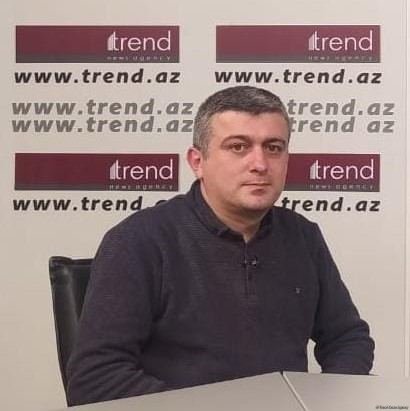BAKU, Azerbaijan, June 12. Enrichment of uranium to 60-percent level in Iran is in the direction of the implementation of the strategic step plan adopted by the Iranian parliament, Vice President of Iran and Chief of the Atomic Energy Organization of Iran (AEOI), Mohammad Eslami said, Trend reports.
The vice president stressed that this decision of the Iranian parliament is implemented by the Atomic Energy Organization of Iran. Uranium enrichment to 60 percent is used for various uses, including production of radioisotopes, detectors, etc.
Eslami noted that Western countries create the impression that Iran is pursuing military goals. However, the main goal of the AEOI is to implement the strategic action plan. The purpose of implementing this plan is to satisfy or force the opposite parties to reduce the sanctions imposed against Iran.
“In this direction, uranium enriched to 60 percent was used in the production of fuel layers (sheets), especially in the production of raw materials for radioisotopes such as ‘Molybdenum’”, he said.
In late 2020, the Iranian parliament has decided to implement a strategic plan to tackle the sanctions, citing the non-implementation of the Joint Comprehensive Plan of Action (JCPOA) signed between Iran and six countries and the imposition of sanctions on Iran. According to the decision of the Iranian parliament, as of February 23, Iran suspended the implementation of additional steps and an additional protocol provided for in the nuclear deal.
Iran's Fordow nuclear facility currently produces 17-20 grams of 20-percent enriched uranium per hour.
According to the decision of the Iranian parliament, 1,000 units of IR2M centrifuges have been installed.
In January 2016, JCPOA was launched between Iran and the P5+1 group (US, Russia, China, UK, France, and Germany) in connection with Iran's nuclear program. In May 2018, the US announced its withdrawal from the deal and imposed sanctions on Iran in November of the same year. To preserve the agreements reached as part of the JCPOA, the European signatories of the deal started in January 2019 that a financial mechanism for maintaining trade with Iran called INSTEX was formed.
On May 8, 2019, Iran announced that it had ceased fulfilling its commitments regarding the sale of over 300 kilograms of uranium, as stated in the deal, basing its decision on the other signatories that have not fulfilled their obligations. On July 7, Iran announced that it will not be fulfilling its commitments regarding the enrichment of uranium at 3.67 percent and the reconstruction of the Arak Heavy Water Reactor Facility as stated in the deal.
Iran announced that it will enrich uranium using next-generation centrifuges and will not mix it with the enriched uranium residues as part of the third step of reducing commitments in JCPOA on Sept.5. On Nov. 5, 2019, Iran announced that it took the fourth step in connection with reducing its commitments to the nuclear agreement. So, uranium gas is being pumped to the centrifuges at the Fordow Fuel Enrichment Plant.
On Jan.2020, Iran took the last fifth step in reducing the number of its commitments within JCPOA.
On May 8, 2018, the US announced its withdrawal from the Joint Comprehensive Plan of Action (JCPOA) between Iran and the 5+1 group (Russia, China, the UK, France, the US, and Germany), and imposed new sanctions against Iran as of November 2018.
Over the past period, the sanctions affected Iranian oil exports, more than 700 banks, companies, and individuals. The sanctions have resulted in the freezing of Iranian assets abroad.
---
Follow the author on Twitter:@BaghishovElnur






